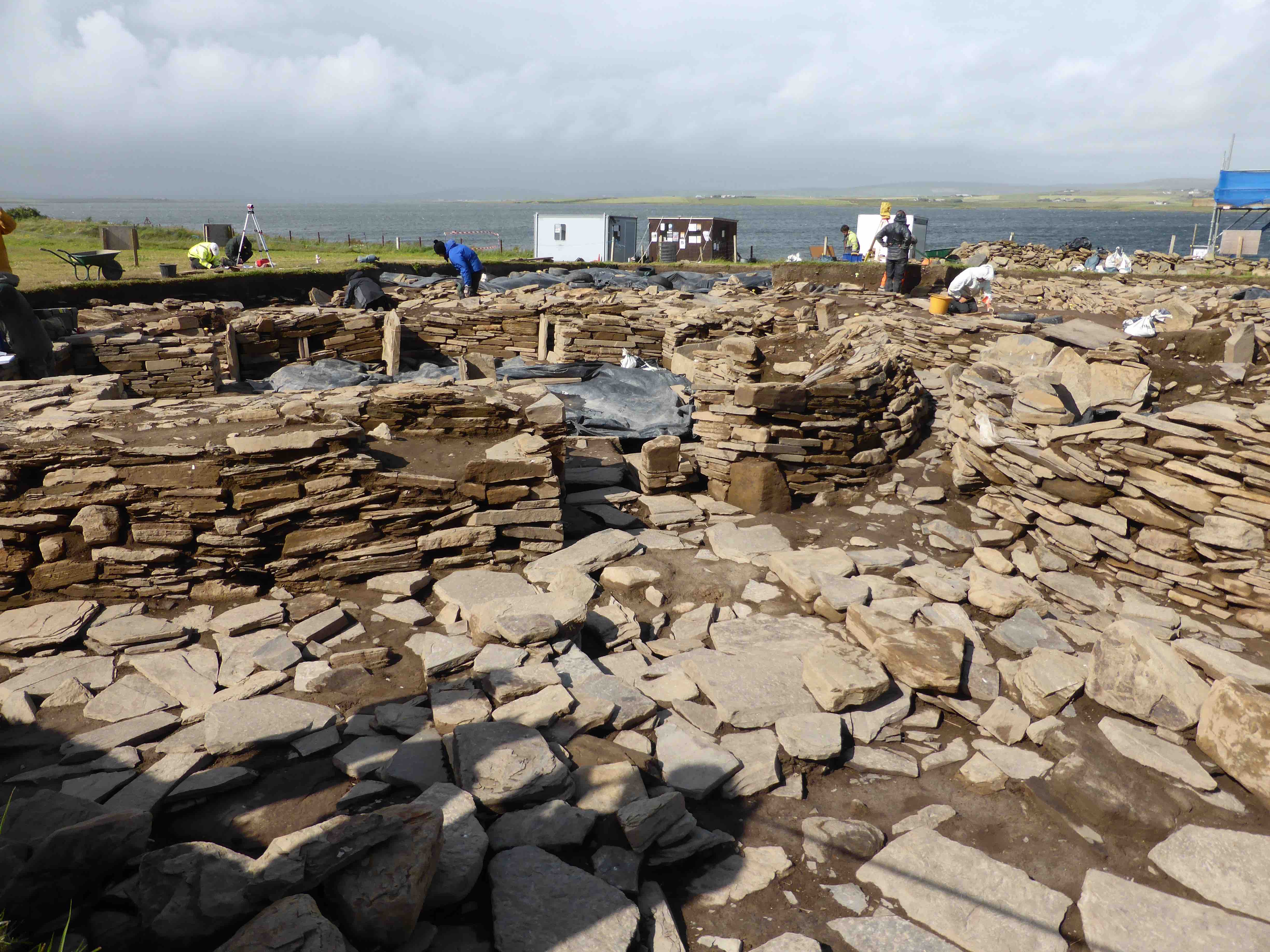
The excavations at the Ness of Brodgar are a big attraction for summer visitors to Orkney.
Orkney in the summer is a lively place for archaeologists. It is fun to try and spot the archaeological diggers when I am doing my supermarket shopping in the evenings. There are usually two or three excavations taking place and a lifetime of digging has given me some sort of second sense about the lean, hungry look of those searching through the items that have been reduced in price because they are nearing their sell by date.
Of course, the main attraction for the diggers is the opportunity to work at Ness of Brodgar. It is a big excavation, and many of the team return year after year to follow the progress of uncovering the amazing structures there and keep up with the friends they made in previous seasons. At the weekends you might see folk who have come over to Mainland Orkney for supplies from Links of Noltland in Westray, or sometimes there is another team up working on one of the Viking sites, or on the chambered tombs in Rousay. It is nice for me, as I can catch up with those who live south – some of the diggers are colleagues, some are people I have known since they were students at universities such as Edinburgh and Glasgow.
There is another sort of archaeological visitor too. As word about the archaeology in Orkney spreads around the globe, so each year brings a steady stream of people undertaking their own research. Many are students who have chosen to write dissertations and research projects on aspects of Orkney archaeology. Some come from the UK, but there is an increasing number from overseas. Quite often they will have come across one or other of my guidebooks and, finding me online, they email to see if they can meet up and chat about their ideas. When I can, I agree because it is a great way to find out about a whole range of projects and points of view that I’d never contemplate otherwise. Sometimes, they are not archaeology students but rather architects, artists, or ecologists. Their outlook and the things that excite them about the past can be very different and interesting. It is particularly rewarding when I receive an email attachment months later – a few will send me their completed work and I always enjoy reading it. This year’s visitors have included a painter, a poet, and, most recently, a couple of students in photo journalism from the University of Missouri who were filming the Neolithic archaeology and comparing it to the life of the farmers of Orkney today. I’m hoping that they might be able to return to Orkney with their completed film, because it would be nice for people to see it and hear about their work.
That brings me nicely to the final summer visitor – each year we seem to see an increase in professional teams here to film, especially at the Ness of Brodgar. Television crews come from all around the world to catch the action in Orkney. The main crew this year are from the BBC and they are filming a three-part series. I understand that the presenters include Neil Oliver (who worked as part of my excavation team on Rum when he was a student at the University of Glasgow many years ago), Chris Packham, and Andy Torbet. I spent quite a bit of time with the team when they were scoping their filming; it is a good opportunity to discuss the landscape change that I’m interested in as well as the archaeology that I write about in my books such as ‘Between the Wind and the Water’. Actually, once filming begins it is a hectic schedule of rushing around to film at various locations across the islands, interspersed with hanging around waiting for the light to change or the weather to change. At those times I feel glad that I opted for the easy career of writing about it all from the comfort of my study.
Once the winter comes, however, it is hard not to feel a little smug – watching the finished product on television and remembering back to the summer’s conversations. Then I can look out of my window and feel even smugger that I am still here – at the heart of it all.
You must be logged in to post a comment.